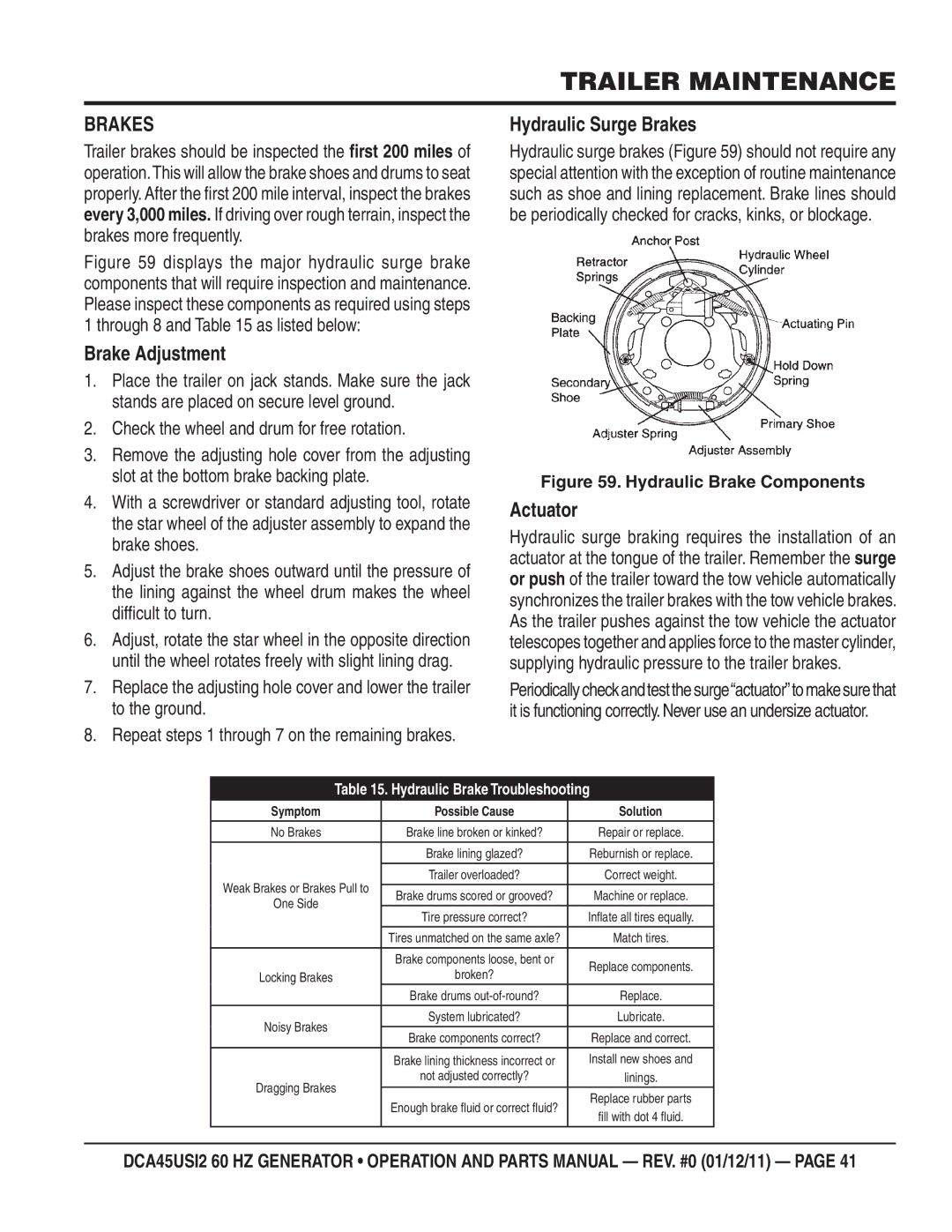DCA45USI2 specifications
The Multiquip DCA45USI2 is a robust and versatile generator that caters to a wide array of power needs across various applications. Designed for both commercial and industrial use, this generator stands out due to its powerful output, durability, and advanced technology.The DCA45USI2 offers a maximum output of 45 kVA, making it suitable for both demanding construction sites and as a backup power source for critical equipment in emergencies. It operates with a reliable Yanmar diesel engine, known for its fuel efficiency and longevity, ensuring that users can count on consistent performance over extended periods. The unit is built to provide high-quality electrical output, ensuring that sensitive equipment is protected from surges and fluctuations.
One of the standout features of the DCA45USI2 is its sound attenuation technology. Enclosed within a sturdy yet compact frame, this generator is designed to minimize noise levels, making it an ideal choice for urban environments or noise-sensitive applications. The insulation materials used are specifically chosen to absorb sound waves while still allowing for efficient ventilation.
In terms of ease of use, the DCA45USI2 is equipped with a user-friendly control panel that provides comprehensive monitoring capabilities. This includes advanced protective features, such as low oil pressure shutdown, high-temperature shutdown, and overload protection, ensuring that the generator operates safely at all times. The digital display offers real-time information on vital operating parameters, enabling operators to swiftly respond to any issues that may arise.
Another key characteristic of the DCA45USI2 is its portability. Weighing in at a manageable level for its size and capacity, it features heavy-duty wheels and a lifting eye which allow for easy transportation across job sites. This adaptability is crucial for rental companies and contractors who require a reliable source of power on-the-go.
Overall, the Multiquip DCA45USI2 embodies a blend of power, efficiency, and convenience. Its advanced engineering and thoughtful design cater to the needs of various industries, making it a preferred choice among professionals who demand reliability and performance from their equipment. Whether for construction, emergency response, or temporary power solutions, the DCA45USI2 proves to be a formidable ally in getting the job done efficiently and effectively.

